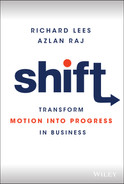Part Three
The Season
The unmistakable sound of 40 Formula 1 engines gunning as the light turns to green on the starting grid gets the crowd fired up. Its cheers and shouts are drowned out by the distinctive roar of the cars whizzing past. The race is underway!
The sun bakes the tarmac of the track and, after the usual jostling for position, the drivers spread out a little with the leaders breaking away from the rest. On lap 22, one of the cars in the middle of the pack suffers a burst tyre. The driver loses control on turn three, spinning into the barriers and clipping the wing of another car on its way.
The nose of the car crumples as it hits the barrier, and debris and dust flies into the air. The driver hits their steering wheel in frustration, climbing out of the vehicle as the safety marshalls rush towards them.
The drivers immediately behind dodge the debris that scatters the track and it isn't long before yellow flags are waving at the side of the track, slowing the race to allow all the drivers to safely navigate this section of track until the debris is cleared.
As soon as the crash happens, the principals of every team spring into action, shouting directions to their respective crew and briefing their driver over the radio, doing everything they can to maintain their advantage or gain on their competitors during the disruption. They all know that these incidents that are outside of their control can affect their performance across the season. Valuable championship points can be gained and lost and, for some, even an end to their hopes for a season.
The principal whose car has crashed is focusing all their energy on their remaining driver, but they can't hide their frustration. They know there will be other seasons, but failing to finish in this race will put their driver too far behind the leaders to have any hope of a top-three finish in either the drivers' or the constructors' championships this year.
A standard Formula 1 season includes 22 races at tracks around the world. Each qualifying session and race day will be different. Aside from the tracks themselves being different, each team will have to contend with whatever weather conditions occur on the day. Incidents, like collisions, can change the shape of a race. While the principals and their crews can prepare for a given track, they cannot control what weather they have on the day or what might happen in the course of a race.
They have to adapt quickly, change their strategies, and read the external environment to give their driver the best chance of succeeding on the track.
In business it is no different. What we have discussed in Parts One and Two are the elements of your organisation that you can control. However, in Part Three we are looking at the enterprise environment. This is the environment you operate in, where you have to account for competitors, economic conditions, and many other factors that will affect your business.
These aren't fixed conditions, they are constantly changing, which is why it's so important that you are able to adapt to meet them. As we said in the first chapter, you adapt or you die. In these final three chapters, we are going to explore how your organisation can make the best of conditions that are outside your control.
In Chapter 6, we are going to focus on what is happening to your organisation and how the concepts and principles we've described can be brought together across your business as a whole. Chapter 7 is about the business environment and how you can respond and make the most of all of your opportunities. In Chapter 8, we explore the concept of “going for the albatross” and how you can tell when you should go for those big, bold ideas and when you should hold back.
